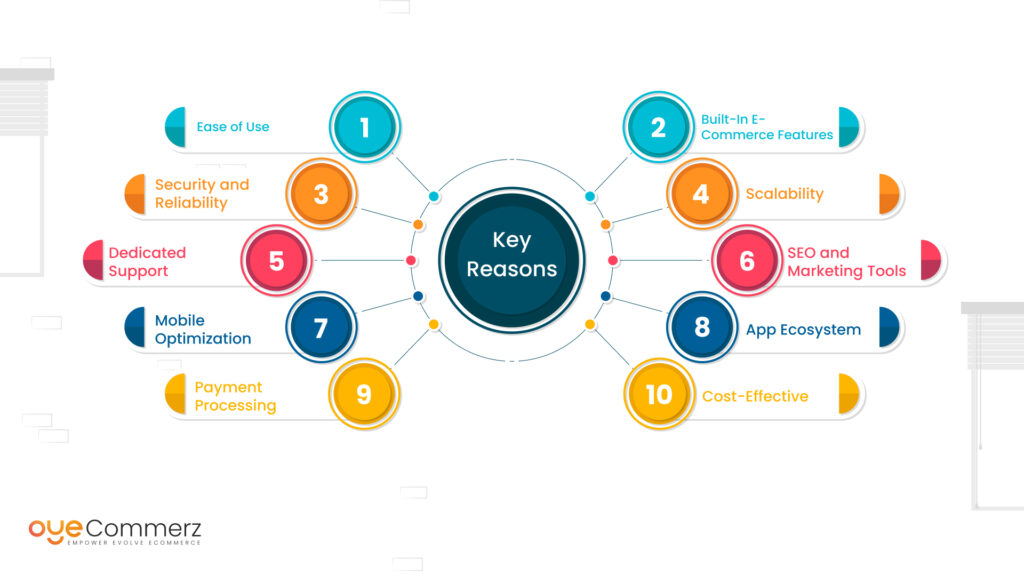Transitioning from WordPress to Shopify is an promising step in optimizing your online store operations. As companies grow, selecting a platform that supports scalability, UX, and customization is essential. Shopify has emerged as a preferred choice for online merchants, providing unmatched adaptability, security, and user-friendliness. In this guide, we will delve into why this migration is a game-changer, highlight the benefits, and share actionable steps to facilitate a seamless move.
1. Top Reasons to Transition from WordPress to Shopify
The combination of WordPress and WooCommerce, has served countless e-commerce platforms. However, as companies scale, issues like reliance on plugins, security vulnerabilities, and complex setups can hinder growth. Shopify, specifically created for e-commerce, addresses these issues with an all-in-one, intuitive solution. Real data back this shift—Shopify hosts over 4.4 million websites globally, with a documented 10% increase in sales conversion rates for numerous merchants after migration.
2. Key Benefits of Shopify for E-commerce Success
Shopify’s robust ecosystem is tailored for expanding brands. Its standout benefits are:
- Seamless Customization: Shopify offers over 80 professionally designed themes.
- Integrated Tools: Capabilities such as Shopify Payments and integrated SEO streamline operations.
- International Expansion: Multi-currency support and localization features empower brands to reach global markets.
Additionally, Shopify delivers an uptime rate of 99.98%, ensuring your website remains accessible.
3. Getting Ready for Your WP-to-Shopify Transition
Before migrating, assess your current store. Analyze product data, client information, and SEO performance. Tools like Shopify’s Migration Kit or third-party solutions help ease the transition. Create a comprehensive plan, making sure all assets—product descriptions, media files, and articles—are optimized for transfer.
4. The Importance of Accurate Data Migration
Data migration is a cornerstone of a smooth transition. When moving from WordPress to Shopify, prioritize:
- Product Information: SKU, descriptions, and categories.
- Client Information: Emails, order history, and preferences.
- SEO Optimization: Preserve meta tags, URLs, and redirects to avoid SEO losses.
Use tools such as LitExtension to facilitate seamless migration while reducing mistakes.
5. Customizing Your Shopify Store
After the move, customizing your Shopify store ensures it reflects your brand. Take advantage of Shopify’s drag-and-drop editor to create layouts with ease. Shopify's themes are optimized for all devices, providing a smooth UX across devices—a key point, given 74% of online shopping comes from mobile users.
6. Maintaining SEO During Migration
SEO is vital for maintaining your online presence during migration. Shopify excels in SEO with clean URL structures, built-in optimization tools, and seamless blog integration. Ensure:
- Set up URL forwarding for existing links.
- Enhance updated content with targeted phrases.
- Leverage plugins like Plug in SEO to track analytics after the switch.
7. Essential Tests After Migrating to Shopify
After finishing the transfer, run detailed checks.
Review: - Page load times (Shopify delivers faster speeds in contrast with WP).
- Functionality WordPress online store to Shopify of payment gateways and checkout processes.
- Adaptability across devices.
Testing ensures your store provides a seamless shopping journey from day one.
8. Case Study of a Successful Migration
An example of effective platform switching is Gymshark, a sportswear company that transitioned to Shopify. After the switch, the company experienced a 60% increase in mobile sales and significantly lowered site downtime. This showcases the capabilities of Shopify in driving online business success.
9. Overcoming Common Migration Issues
Migration comes with challenges, such as data integrity and reconfiguring custom functionalities. However, Shopify’s robust support and third-party experts simplify the process. Partnering with experienced Shopify developers helps guarantee a smooth transition.
10. Starting Your Journey with Shopify
Switching from WordPress to Shopify represents a forward-thinking approach to e-commerce. By addressing scalability, streamlining operations, and improving buyer satisfaction, Shopify enables companies to succeed in challenging industries.
Conclusion
Switching from WordPress to Shopify offers a smart solution that can greatly enhance your online business performance. With a well-structured strategy, the right tools, and expert support, you can unlock new WordPress e-commerce migration growth opportunities.
Excited to start the journey? Reach out today to learn how our Shopify migration services can transform your e-commerce platform. Get in touch today, or consider: Is it time to seize Shopify’s advantages for your store?
